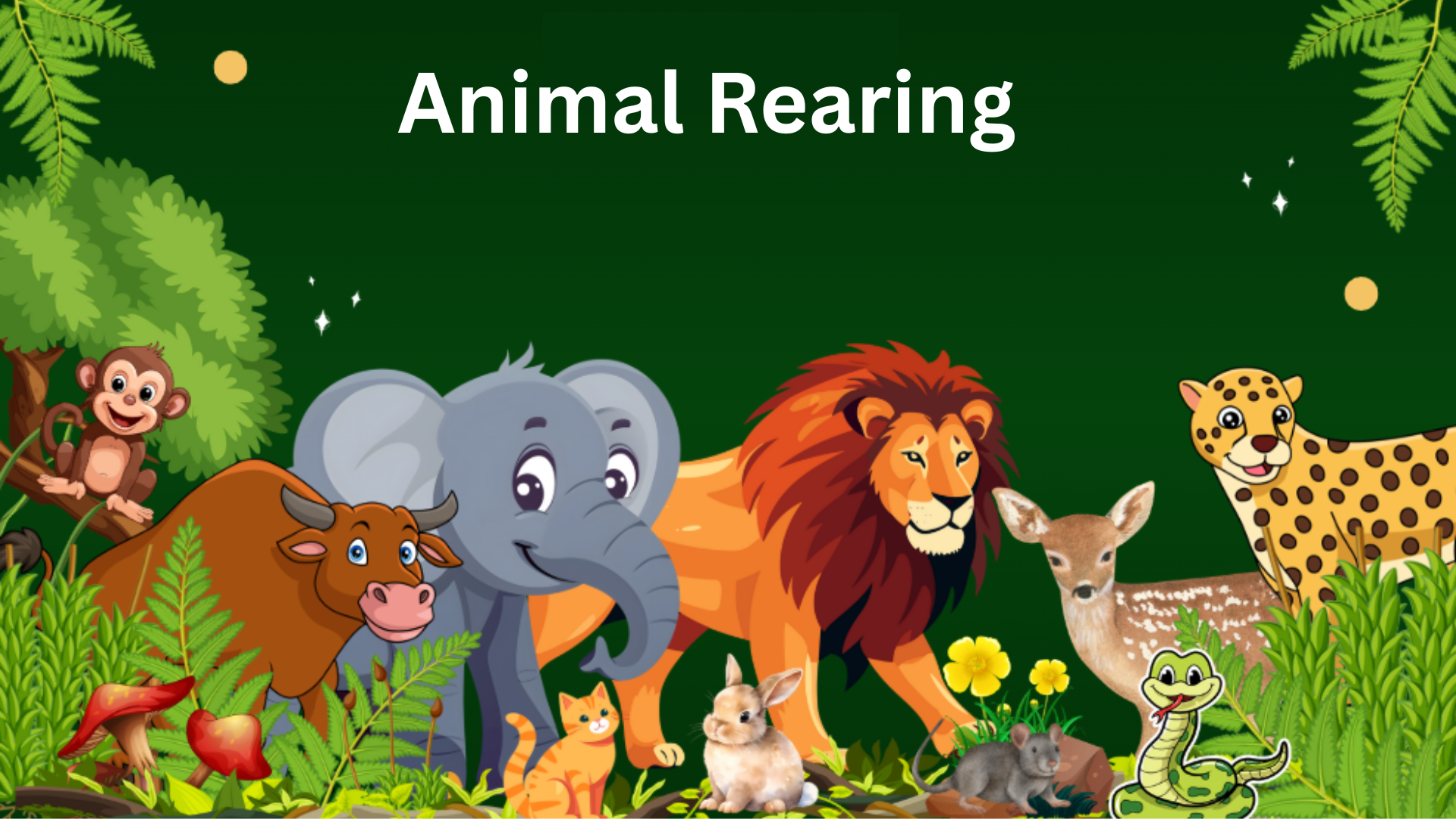Hello, dear students! Today, let’s chat about a wonderful lesson on animal rearing. Have you ever thought about how some animals live happily in our homes while others roam freely in the forest? Let’s explore this together.
What Is Animal Rearing?
Animal rearing means taking care of our animal friends so they can live healthy and happy lives. In our lesson, we learn that some animals, called domestic animals, live with us in houses or villages. These animals—like cows, dogs, and hens—get special care from their owners. On the other hand, wild animals live in forests, enjoying nature’s gifts and sometimes facing challenges like a shortage of food.
A Story of Animals in a Meeting
Imagine all the animals gathering for an important meeting. The reason? The lion, who is the king of the forest, is discussing the upcoming birthday of his daughter. Now, you might ask, “How can they celebrate when there isn’t enough food?” The animals share their worries: while domestic animals have plenty of food provided by their owners, wild animals face difficulties because of a lack of grass in the forest.
But then, a bright idea shines through! One animal reminds everyone that the rainy season is coming. When it rains, the grass will grow tall and green, and all the animals—whether in the forest or in the village—will have enough to eat. With this happy thought, they decide to wait and celebrate on a grand scale next year, ensuring that everyone is well-fed and joyful.
Why Is This Important?
This story teaches us a few important lessons:
- Caring for All Creatures: Whether an animal lives in our home or the wild, it needs care and kindness.
- Patience and Timing: Sometimes, waiting for the right moment can lead to even better celebrations and happier times.
- Working Together: Just like the animals in the meeting, we should work together and share our ideas to solve problems.
Remember, rearing animals is not just about using them for work or food—it’s also about loving them and making sure they are comfortable and safe.
FAQs
Q: What does “animal rearing” mean?
A: It means taking care of animals so that they grow up healthy and happy. This can include feeding them, keeping them safe, and showing them love.
Q: What is a domestic animal?
A: Domestic animals are those that live with us at home or in our villages. They often get extra care from their owners.
Q: What is a wild animal?
A: Wild animals live freely in nature, like in forests. They take care of themselves but sometimes face challenges, such as finding enough food.
Q: Why do we rear animals?
A: We rear animals for many reasons—so they can help us in our daily lives, provide food, and also be our companions that bring us joy.
Q: How can we help animals even if we are young?
A: You can help by being kind to animals, telling your parents or teachers if you see an animal in trouble, and learning more about how to take care of them.
Take assessment:
1. Multiple Choice Questions (MCQs)
- Example:
Which of the following is a domestic animal?
A) Tiger
B) Cow
C) Deer
D) Lion - Focus: Identify key facts like differences between domestic and wild animals, or details from the animal meeting story.
2. Fill in the Blanks
- Example: Domestic animals are those that live in our _______ or _______.
- Focus: Reinforce vocabulary and factual details, such as “home” or “village” for domestic animals and “forest” for wild animals.
3. True/False Statements
- Example:True or False: Wild animals always have enough food because the forest provides everything they need.
- Focus: Check understanding of the challenges faced by wild animals versus domestic animals.
4. Matching Columns
- Example:Draw lines to match the animal with where it is mostly found:
- Cow – ______
- Lion – ______
- Dog – ______
- Deer – ______
- Focus: Assess the child’s ability to differentiate between domestic and wild animals.
5. Short Answer Questions
- Example: Why did the animals decide to postpone the birthday celebration?
(Expected answer: They waited for the rainy season so that the grass would grow and all animals would have enough food.) - Focus: Encourage concise expression of the main lesson points and key details.
6. Descriptive Questions
- Example: Describe in your own words what “animal rearing” means and why it is important.
- Focus: Let the child express their understanding in a complete sentence or short paragraph, reinforcing language and comprehension skills.
7. Open-Ended Questions
- Example: Imagine you are one of the animals at the meeting. How would you suggest solving the food shortage problem?
- Focus: Stimulate creative thinking and problem-solving by letting the child explore ideas beyond the text.
8. Visual or Drawing-Based Questions
- Example: Draw a picture of your favorite domestic animal and write its name next to it.
- Focus: Combine art with learning, allowing the child to visually express their understanding of domestic animals.
9. Sequencing Questions
- Example:
Put these events in the order they happened in the story:
- Animals held a meeting
- The lion announced the birthday
- Discussion about the shortage of grass
- Decision to wait for the rains
- Focus: Check comprehension of the narrative’s sequence and cause-effect relationships.
10. Discussion or Oral Questions
- Example: Ask the child: “What do you think would happen if wild animals had all the food they needed?”
- Focus: Engage in a friendly discussion that encourages the child to share thoughts, ideas, and further questions.

